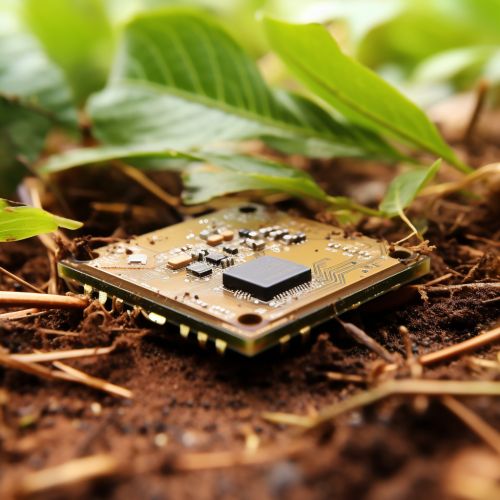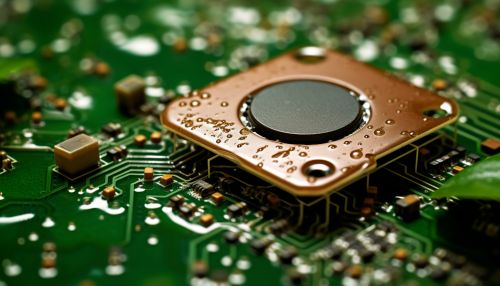Advances in Biodegradable Electronics
Introduction
Biodegradable electronics, also known as transient electronics, are a category of electronic systems designed to dissolve, disintegrate, or biodegrade after a specific period of use. These electronics are made from environmentally friendly materials that can decompose naturally over time. The development and advances in biodegradable electronics have broad implications for various fields, including medical implants, environmental monitors, and consumer electronics.


Materials Used in Biodegradable Electronics
The primary materials used in biodegradable electronics are organic or inorganic substances that can degrade in the environment. These materials include biodegradable polymers, metals, and semiconductors.
Biodegradable Polymers
Biodegradable polymers are a class of polymers that decompose naturally in the environment. They are often used as the substrate material in biodegradable electronics. Examples of biodegradable polymers include polylactic acid (PLA), polyglycolic acid (PGA), and polycaprolactone (PCL).
Metals
Certain metals, such as magnesium, zinc, and iron, are used in biodegradable electronics due to their biodegradable properties. These metals can degrade in the environment without causing harm. They are often used as conductive materials in biodegradable electronic devices.
Semiconductors
Biodegradable semiconductors, such as silicon, are used in biodegradable electronics. Silicon is a widely used semiconductor material in electronics due to its excellent electrical properties. In biodegradable electronics, thin layers of silicon are used, which can dissolve in water over time.
Applications of Biodegradable Electronics
Biodegradable electronics have a wide range of applications, including medical devices, environmental sensors, and consumer electronics.
Medical Devices
Biodegradable electronics are particularly useful in the field of biomedical engineering. They can be used to create medical implants that degrade and disappear after they have served their purpose, eliminating the need for additional surgeries to remove them. Examples include biodegradable pacemakers and drug delivery systems.
Environmental Sensors
Biodegradable electronics can also be used to create environmental sensors that monitor various environmental conditions, such as temperature, humidity, and chemical levels. After their operational life, these sensors can degrade naturally in the environment, reducing electronic waste.
Consumer Electronics
In the consumer electronics industry, biodegradable electronics can be used to create environmentally friendly electronic devices, such as mobile phones, laptops, and wearable devices. These devices can degrade at the end of their life cycle, reducing the environmental impact of electronic waste.
Challenges and Future Directions
Despite the significant advances in biodegradable electronics, several challenges need to be addressed. These include improving the performance and reliability of biodegradable electronic devices, developing efficient manufacturing processes, and addressing regulatory and safety issues. Future research in this field is expected to focus on these areas to further advance the development and application of biodegradable electronics.
